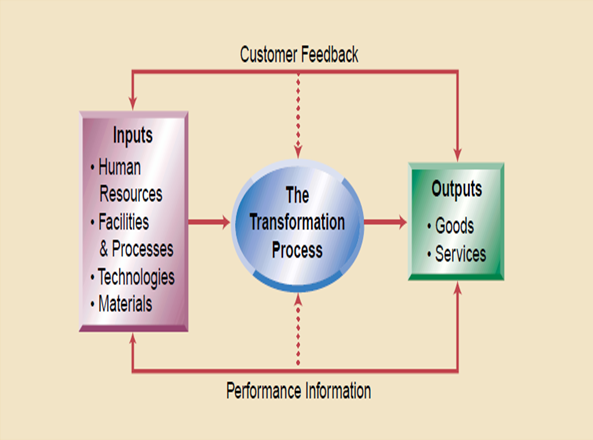The US and the UK Master’s Part / Chapter-wise Dissertation Writing Service

Then You’ve Certainly Reached the Right place
Assignment on Concept of Change
The development of the concept of managing change
Introduction
Change is vital for existence of any institution (Spencer, 199). Change is almost unavoidable and indispensable to positive growth of any organisation. There will be always some hindrance or resistance to the change. This resistance comes from within the organisation only. Personnel benefits, leadership or organisational culture can also pose threat to any change.
The Essentials of Change
If change does not occur, an organisation cannot function for long. An organisation needs to respond to the demands and requirements of its own employees, customers and stakeholders (Spencer & Pruss,1993).These demands for change can be of various nature like change in the policies, change in the organisational strategies, change in the leadership, change in the technology, or change in the product design. The organisation needs to respond in a timely fashion to these requirements in order to sustain and live in the ever changing competitive world. A well informed and updated organisation will also fetch good attention from its consumers, which in turn will increase their sales and profitability.
If the organisation wants to move ahead and wants to define its competitive edge, it has to accept the wave of change forming inside and outside the organisation. This way the organisation will learn to adapt itself to the changing environment and emerge more successful and powerful. The organisation will then restructure its policies, strategies and planning. When everyone in the organisation understands the advantages of change, only then can an organisation can appreciate its true advantages and impact. All the employees and staff members of the company should see change as a natural, continuous and spontaneous process in development.
Identification of Need of Change
Changes do not come ringing a bell or sounding an alarm. A wise and learned leader should be discerning and intelligent enough to identify the indications of change requirements. There are various methods available to identify the change areas.
- By way of consultation with the superiors or seniors
- Survey of the concerned department or the organisation, depending upon the situation.
- Discussion with the peer group
- Discussion with the concerned staff members
- Market survey of consumers ever growing expectations.
By undertaking these methods, leader can gather full support for his ideas.

Figure 1: Transformation Process in Change
Source: Hector Fratty, 2008
Factors Causing Resistance to Change
As mentioned earlier, the concept of change is not positive for everyone. All the employees or the staff members do not think the same way. There could be negative thought process also existing in this organisation which will offer resistance to the change (Cribbin, 1981).
Probable conditions when resistance is maximum
- Change is believed to be below standards
- Change affecting job design
- Bringing reduction in authority or powers
- Disturbance in routine work
- Change in the relationship pattern
- Mental or physical tiredness ( Wilson,1983)
Leadership style also plays its role in offering resistance to the change. Leaders who do not communicate with their employees, do not socialise, do not provide emotional support are more likely to face resistance.
Diffusing Resistance: Suggestive Strategies
There are three basic components which can be used to diffuse resistance to change these are:
- Personnel
- Organisational culture’s pattern
- Leadership style
Personnel Participation Strategy
In this strategy an individual or a group formulates or selects the objectives, which will bring about the required change.
Organizational Structure Strategy
Culture of the institution can provide support for relevant change. Following are some suggestions from Recardo (1995) philosophy
- Institution should develop clear vision of the change
- Administration should fully support the change
- Flexibility on the part of the institution is essential
- Effective communication strategy
- Take care of needs of losers
- Performance measures be updated
- Rewards system be in place
Transformational Leadership Strategy
"to transform people and organizations in a lateral sense--to change them in mind and heart; enlarge vision, insight, and understanding; clarify purpose; bring about changes that are permanent, self-perpetuating and momentum building"
- Covey 1991, p. 287
A successful implementation of the change depends majorly on the style and functions of the leadership.
Methods of Change
Wide range of methods and tools are available to bring about change in the organisation (Costley &Todd, 1987)
- Technological Method
- Managerial Method
- People Method
- Structural Method
- Organisational Development
Implementation of Change Model
An organised and systematic approach is required to effectively implement the model of changes
- Identification of the need offor change
- Everybody’s involvement is essential
- Analyse the coming reactions
- Take a final decision
- Make timetable for change
- Communication
- Implement the program patiently
Leader can combine more than one strategy to get good results, depending upon suitability.

Researchers to mentor-We write your Assignments & Dissertation
With our team of researchers & Statisticians - Tutors India guarantees your grade & acceptance!
Our servicesTracing how the idea has evolved and altered over time from one of change management (‘overcoming resistance to change’) to change leadership (‘seeing change as an opportunity’);
Change Creates Opportunities
First step is seeing, second step is seizing and third is innovating continuously
- Kotter, 1979
Change definitely creates opportunity. However leader should have an eye to identify and recognize this opportunity. In today’s world where products are fast becoming obsolete, consumers’ demands are constantly changing an organisations need to innovate and improve. To ride the wave of change is most important to stay in this competitive world. An organisation needs to put lot of efforts in Research & Development area to match up with the expectations of the consumers ( Kotter, 1979).
Be Different to Make a Difference
- Breaking the Rules
Brave leaders break the rules to make way for their ideas and concepts. They lead and guide their juniors to achieve the best. A clear articulated commitment will develop, when the leader is able to see future of the company way ahead from present times( Bridges, 1999).
- Think differently
- Think innovative and daring
- Vision for future
- Accept challenges
- Learn from mistakes
- Motivate others
Changes – Source of Opportunity
Every organisation gets an opportunity almost on a daily basis. Opportunities arise and consolidate itself on a regular basis (Dent, 1979). Majority of these opportunities affect strategic planning of the organisation and its culture.
An opportunity based business development is based on two core points:
- Most of the companies get lot of attractive opportunities to implement. Most of these go unnoticed and only two or three of them get implemented
- It will become necessary for the organisations to adopt to changing environment given the rapidly Creativity becomes a continuous activity for the leader. He has to foresee the future & make strategies accordingly. However creativity when combined with the ability to innovate makes powerful combination. He has to identify the changes and convert them into opportunities for the organisation.
How these ideas have been taken up and have influenced the engineering or built environment sector (using suitable examples).
Example 1: Ricardo Selmer, SEMCO Pumps
“The key to management is to get rid of managers
The key to getting work done on time is to stop wearing a watch
The best way to invest corporate profits is to give them to the employees
The purpose of work is not to make money. The purpose of work is to make the workers, whether working stiffs or top executives, feel good about life”.
Ricardo Semler, 1993
Introduction to new strategies
Ricardo Semler, barely 24 years (youngest graduate to pass out from Harvard University at 20) was made the CEO of Semler & company in 1982. This Brazilian company was being managed by his father at that time. The functioning of the organisation was based on typical autocratic format. The structure of the company was in a pyramid shape, with the CEO of the company at the top. He was taking all the business & other related decisions and management and lower hierarchy was following them (Ricardo, 1993). Semler after being handed over the reins of the company initiated radical changes. He abandoned all the secretarial designations and adopted an aggressive diversification strategy. Majority of the outsiders felt that this would prove detrimental for the company.
Product diversification strategy adopted by Semler was purely dependent on employees’ initiatives. Driven by physical and economic motivation, they developed more ideas and product concepts to make the company one of the most sought after employer. Their commercial products include digital scanners, dishwashers, marine pumps while service based products has environmental and banking services (Semler, 1993). Outside market was so impressed by company’s strategies that almost 150 of 500 Fortune Companies closely studied its policies and their implementation. According to Taylor, the results show improvement by almost 200 percent (Smiths. A, 2000).
During the recession of 1990s the Semco devised strategies to survive the economic slowdown. Company management shifted towards a more liberal and democratic style of working. Workers got more powers to participate in planning, implementation and decision making. In an effort to save company from severe damages, workers took to multiple job responsibilities producing knowledgeable and cross trained employees. Staff devised innovative ways to work effectively, which produced extraordinary results. Scientific theory saves human time-energy and guides improved designs to implement (Nyland. C, 2000).There was drastic decrease in production cost, product delivery time and product defects. It also increased the quality of the products and team’s productivity. Semler, 1993 commented “Productivity increased due to cut in the size of the teams. Staff performs to their best when they know that people around them have got reduced.”
Relevance with Semco
Quite early in his life, Semler realized the importance of a great and reliable working team. He knew that every human being feels motivated if rewarded or praised for his efforts. In case of an organisation salary hike, benefits, stock option or bonus have huge effect on staff morale. The following strategies adopted by Semler reflect on his motivational practices.
- Profit Sharing
Semler worked out a profit sharing plan for all its employees at all the levels. According to this, employees were given one quarter of the profits of their departments. This resulted in jump of salaries by almost double or triples the amount, given the roaring success of the company(Semler,2005). A democratically appointed committee was made in-charge of this scheme. This reduced the complaints of mismanagement of salary distribution.
- Promotions
Staffs were given all the freedom to take up cross-functional or horizontal promotions. Here they were encouraged to acquire knowledge about other departments also and gain expertise. They could also get themselves transferred to new departments.
- Free Flow of Information
All the employees of the company had access to financial data of the company. Training sessions were organised to help them understand financial statements and balance sheets. Everyone knew salary of each other and profits/losses of each division. Anybody could attend counsellor’s meetings and could vote (Semler, 1993).
- Flexible working Environment
Employees were given freedom to choose the project they wanted to work on, change their departments and estimate their own salaries.
- Trust Building
All the above strategies proved mutually benefiting to both the management and workers. Workers trust for their management and owner of the company increased by manifolds and Selmer could also trust his staff better (Semler, 2004).
Unorthodox Style of Working – Maverick Semler
Semler’s first book ‘Maverick’ in 1993 gives an insight and inside story of the extraordinary success of Simcon. His unorthodox style of working gave more importance to staff and rest of the things fell in place automatically. There was no dress code for employees, meetings were made voluntary and vacations were made mandatory. For almost 25 years, Semler gave his employees all the freedom to choose their area of working, hours and even salaries. This method enhanced productivity, won trust of his employees and gave phenomenal growth to the company.
Example 2: Oticon Case Study
Introduction to Oticon Company
Founded in 1904, Oticon is a Denmark based company. The company is among the topmost leaders in hearing aid industry. In early 1990s the company became most admired company due to radical changes. This newly formed company projected itself as “project and team based organisation”.
Changed Organizational Strategies
In Oticon, frequent managerial interference along with authoritaative orders were demotivating the staff. This was very much reflected in the results, when the company started losing its States customers to a rival company. Kolind, then CEO decided to bring about radical change in the organization. Oticon infused hierarchies with elements of market control. This also encouraged creativity and entrepreneurial skills in the staff (Robert, 1996).
- Job Satisfaction
The jobs created in new office were free from any top level interference or very minimal. This created ‘free market at work’ (Kolind, 1994)).Employees enjoyed working in new environment, where they had all the freedom to choose their projects. Moreover anyone in the company could start a project. The employee was required to make up a team with right number of team members to start with and work for any area concerning Oticon. These project team members would discuss the project in great details with the Products and Management Committee. The project was given three years time to yield positive results.
- Freedom to Employees
Kolind gave all the opportunities to his staff to explore ideas and implement them in best possible way. There was almost negligible amount of interference from the upper management. Staff could sit anywhere in the office, could work with anyone and access to all the information inside the office.
- Job design
All the jobs in Oticon were based on ‘free market forces’ .The jobs were given as per the qualifications of the staff. Jobs included initialisation of the work, correcting the project, implementing the results so achieved, monitoring and analysis of the project.
- Leadership
Leadership definition got a new makeover after applying new concept. Leaders were the independent project leaders and not the top managerial executives. It adopted a ‘Two-Tier’ system where first tier had CEO along with his 10 managers and the second tier had independent project managers (Kolind, 1994).
- Learning
The concept of Oticon was based on ‘knowledge’. The company encouraged formation of various knowledge nodes which were connected by a number of links in a non-hierarchical feature (Kolind, 1994).
- Anthropocentric Approach
This approach advocates that jobs or work should be designed keeping in mind the capabilities and needs of an individual person. The company gave liberty to its employees to form their own team. Any employee who had an idea could work on it and select his own team.
- Socialization
More interactions were possible due to formation of project groups, they would discuss their strategies, methodologies and functioning. Employees could even take up more than one project (Robert, 1996).
- Salary Structure
Salary negotiations got decentralized which gave all the powers to the project managers to negotiate right amount. The average salary structure was not changed but incentives given by the company were based on individual performances.
- De-departmentalization
The new office was relocated to a new building in Copenhagen. There were no designations or departments in this office. All the desks were arranged in a linear fashion, allowing free movements of the groups in any of the directions.
- Stock – Option Plan
To motivate the staff, Kolind (1994) gave employee stock option plan. A certain percentage of the profit was decided for the employees of the company. More than half of the employees made investment in this plan.
- Quality Customer Service
Oticon was considered as hearing aid manufacturing company, whereas after applying the new concept the company was projected as ‘Customer Oriented’ Company. Company’s mission statement and ideologies were customized according to the client’s needs.
Example 3: Peugeot Case
Set of systematic and coordinated activities to manage and control an organisation to improve upon its effectiveness and efficiency of performance.
- Hofstede, 1980
The core concept of a successful organisation suggests positive coordination between customer and the supplier working towards their mutual benefit. This coordination can become effective when customer-supplier interface exists inside as well as outside the organisation. This approach emphasises on quality production of products and services instead of assessing the quality of the products and services after their production.
The Company
Armand Peugeot started the company in 1986 the company and was named it as Auotmobiles Peugeot. It was then manufacturing and selling automobiles with an internal combustion engine. Citroen SA and Peugeot SA merged in 1976 and a new company named PSA Peugeot Citroen was formed (psa-peugeot-citroen.com, 2010).
Major Changes
Supply Chain Improvement
Selection of the suppliers is an important process, as these are the faces who deal with the customers in all the sales locations for the company.
Software process Improvement
To deliver customised products, there is growing demand for reliable and durable software automotive components & systems.
ISO/TS 16949
Designed by leading automobile manufacturers, this certification establishes the company’s credibility.
Automotive Specific Training
Organisation can provide automotive related training to its employees for better technical progress and organisational development.
Process Excellence
Efficient and effective operations processes can give the company recognition of being the most preferred company.
Implications of Changes
The brand image will get new value after the application of suggested recommendations. Customers will recognise this brand as their valued and desired brand.
In an ever demanding world of automotive world, where there are similarities between individual vehicles, brand image will hold true for the customers. It will give them the cognitive and emotional support to search through wide range of models available in the market. It will help in improving customers’ perception in some of the operations related areas like product strategy, increased efficiency, premium quality and competent customer services.
References
Bridges, 1991. Managing transitions: making the most of change. Wesley Publishing Company.
Costley, D. & Todd, R. 1987, Human relations in organization. (Rev. ed.) New York: West Publishing Company.
Cribbin, J, 1981. Leadership your competitive edge. USA: Amacom
Dent E. & Goldberg, 1999. Challenging resistance to change. Journal of Applied Behavioural Science Pg 25-41
Hofstede, G,1980, Culture and Organizations. International Studies of Management & Organization, Vol 10, No 4, pp. 15-41
Hector Fratty, 2008, PSA Peugeot Citroën Profile, History, Strategy, Development and Production. Lighting and Driver Assistance at Peugeot and Citroën, 2008, Driving Vision News, France
Kotter, J.P. & Schlesinger, 1979 Choosing Strategies for change. Harvard business review pg 106-114
Nyland. C ,2000. An early account of scientific management as applied to women’s work with comment by Frederick W. Taylor, Journal of Management History, Vol. 6, pp. 248-271.
PSA Organisational Objectives of Peugeot . [Online] Available from: http://www.psa-peugeot-citroen.com/document/publication/strat_amb_gb1188999536.pdf Accessed on 16 the July 2010
PSA Organisational Objectives of Peugeot . [Online] Available from: http://www.psa-peugeot-citroen.com/document/publication/strat_amb_gb1188999536.pdf [Accessed on 16th June 2010]
Ricardo Semler, 2004 Taking Ur Business Higher [Online] Available from : http://www.passioncomputing.com.au/Articles/Ricardo-Semler-Semco.aspx [Accessed on 16 th July, 2010]
Spencer, J., & Pruss, A ,1993. How to implement change in your company. London: Piatkus.
Smith, A, 2000. Contemporary Management Practices, [Online] Available from: http://pdf.rincondelvago.com/contemporary-management-practices.html [Accessed on 17th July, 2010]
Wilson, M. 1983. How to mobilize church. Minneapolis: Augsburg Publishing House.

Full Fledged Academic Writing & Editing services
Original and high-standard Content
Plagiarism free document
Fully referenced with high quality peer reviewed journals & textbooks
On-time delivery
Unlimited Revisions
On call /in-person brainstorming session
More From TutorsIndia
Coursework Index Dissertation Index Dissertation Proposal Research Methodologies Literature Review Manuscript DevelopmentREQUEST REMOVAL


